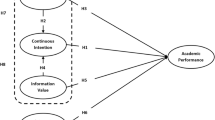Abstract
The aim of this article is to attain a better understanding of which aspects influence students’ housing satisfaction in Trondheim, Norway. Due to rising student numbers in the last decade in Norway, there is a distinct need for new student housing. It has been stated previously that students prefer specific, often central locations in university cities and that they have become more demanding when it comes to the standard of accommodation. Questions related to how and where to accommodate students have become an issue in both public and professional discussions. This study adds to the knowledge on different aspects that influence student housing satisfaction and thus offers background information for further discussion on the student housing situation in medium-sized university cities. Data were collected through a quantitative survey, which emphasized the following five aspects: (1) Type of tenancy/ownership, (2) The impact of demographic variables, (3) Housing location, (4) Different housing characteristics, and (5) Individual facilities (kitchen/bathroom). The survey data indicate that the most important variables for student residential satisfaction were, first, the type of tenancy/ownership; second, the quality of different housing characteristics; and third, the location. In this study, individual facilities and demographic variables did not have a significant effect on housing satisfaction.






Similar content being viewed by others
Notes
Samskipnaden, founded in Norway in 1948, is a non-profit organization with a majority of students sitting on its board (www.sit.no; www.sio.no). Samskipnaden operates independently in each university city, providing a wide range of services in the areas of health, sports, bookshops and also student housing.
600,000 Norwegian Kroner is approximately 75,000 Euro (8 NOK = 1 €).
Standard deviation is a measure of the dispersion. A high standard deviation indicates that the data are spread out over a large range of values, while a low standard deviation indicates that the answers tend to be very close to the mean.
Beta coefficients have a variance of 1. This is usually reported to answer the question of which of the independent variables has a greater effect on the dependent variable in a multiple regression analysis.
The adjusted R 2 is a statistical measure of how well the regression line approximates the real data points (adjusted for the number of regression coefficients). An adjusted R 2 of 1.0 indicates that the regression line perfectly fits the data. It may be interpreted as how much (in percent) of the variation of the dependent variable is attributable to the independent variables.
References
Brattbakk, I., & Hansen, T. (2004). Post-war large housing estates in Norway. Journal of Housing and the Built Environment, 19(3), 311–332.
Brattbakk, I., & Medby, P. (2004). Studentboliger—behovsanalyse. En studie av studenters boligsituasjon og behovet for studentboliger ved de norske studiestedene—2003. Byggforsknotat, No. 64, Oslo.
Chatterton, P. (1999). University students and city centres—the formation of exclusive geographies. The case of Bristol, UK. Geoforum, 30, 117–133.
Christie, H., et al. (2002). Accommodating students. Journal of Youth Studies, 5(2), 208–235.
Clapham, D. (2005). The meaning of housing. A pathway approach. Bristol: The Policy Press.
Eikemo, T. A. (2006). Studentbosetting i Trondheim Kommune. Kvantitativ analyse av Trondheimsstudentenes Boligsituasjon og Preferanser. Report, NTNU Samsfunnsforskning AS.
Frønes, I., & Brusdal, R. (2000) På sporet av den nye tid. (On the trail of the new time). Fagbokforlaget, Bergen.
Gifford, R. (2002). Environmental psychology. Principles and practice (3rd ed.). Victoria, Canada: Optimal Books.
Hauge, Å., & Kolstad, A. (2007). Dwelling as an expression of identity. A comparative study among residents in high-priced and low-priced neighbourhoods in Norway. Housing, Theory and Society, 24(4), 272–292.
Häußermann, H., & Siebel, W. (2000). Soziologie des Wohnens (2nd ed.). München: Juventa Verlag.
Hubbard, P. (2008). Regulating the social impacts of studentification: A Loughborough case study. Environment and Planning A, 40, 323–341.
Kenyon, E. L. (1997). Seasonal sub-communities: The impact of student households on residential communities. The British Journal of Sociology, 48(2), 286–301.
Kenyon, L. (1999). A home from home. In T. Chapman & J. Hockey (Eds.), Ideal homes? Social change, domestic life. London: Routledge.
Mayer, V. (2002). Wohnpräferenzen von Jugendlichen in Wien. Ein Beitrag zur Kultur—und Sozialgeographie des Wohnens. ISR—Forschungsberichte, Institut für Stadt—und Regionalforschung, No. 27. Verlag der österreichischen Akademie der Wissenschaften, Wien.
Miles, S. (2000). Youth lifestyles in a changing world. Buckingham: Open University Press.
Oust, A., et al. (2003). Boligmarkedet for studenter i Trondheim. En undersøkelse av leieprisene. Bachelor thesis, Trondheim and Sør-Trøndelag University College.
Rugg, J., et al. (2002). Studying a niche market: UK students and the private rented sector. Housing Studies, 17(2), 289–303.
Robinson, J. W. (2004). Architecture of institution & home: Architecture as cultural medium. Dissertation, Delft University of Technology.
Smith, D. P. (2005). Studentification: The gentrification factory? In R. Atkinson & G. Bridge (Eds.), The new urban colonialism: Gentrification in a global context (pp. 72–89). London: Routledge.
Thomsen, J. (2007). Home experiences in student housing: About institutional character and temporary homes. Journal of Youth Studies, 10(5), 577–596.
Thomsen, J. (2008) Student housing—student homes? Aspects of student housing satisfaction. Doctoral Thesis, Norwegian University of Science and Technology, NTNU, 182.
Thomsen, J., & Tjora, A. (2006). Changeable Space as Temporary Home. A Qualitative Exploration of Life in an Experimental Student House. Nordisk Arkitekturforskning, 19(3), 13–22.
Universities UK. (2006). Studentification: A guide to opportunities, challenges and practice. London: Universities UK.
7.1 Newspapers
Adresseavisen (06. 10.2003). 900 bygger ulovelig hvert år [900 build illegally every year].
Adresseavisen (09.02.2004). Vil helst gå til ferdig dekket bord [Prefer the table to be set].
Adresseavisen (11.01.2006). Flere ønsker hybelforbud [More and more want a ban on bed-sits].
Aftenposten (09.08.2001). Studenter i boligkø krever kvalitet [Students in the housing queue demand quality] http://tux1.aftenposten.no/eiendom/d226834.
Dagsavisen (18.08.2005). Studenter vil ha luksus-hybler [Students want luxury bed-sits] www.dagsavisen.no/innenriks/article1206634.ece.
7.2 Websites
Husbanken. (2007). (Norwegian State Housing Bank), Finansieringsordningen av studentboliger gjennomgås. Retrieved December 10, 2007, from http://www.husbanken.no/Venstremeny/Tilskudd/Tilskudd%20til%20studentboliger/rapp.aspx.
ISFiT—The International Student Festival in Trondheim. (n.d.). Homepage. Retrieved November 01, 2009, from http://www.isfit.org/news/article?latest=true.
KD. (2007). Kunnskapsdepartementet (Ministry of Education and Research), 3.1.Studentboliger. Retrieved December 10, 2007, from http://www.regjeringen.no/nb/dep/kd/dok/regpubl/stprp/2007-2008/Stprp-nr-7-2007-2008-/3/1.html?id=489862.
Lånekassen. (n.d.). Homepage. Retrieved November 01, 2009, from http://www.lanekassen.no/.
Samfundet. (n.d.). Homepage. Retrieved November 01, 2009, from www.samfundet.no.
Samskipnaden in Oslo. (n.d.). Homepage. Retrieved August 20, 2007, from www.sio.no.
Samskipnaden in Trondheim. (n.d.). Homepage. Retrieved August 20, 2007, from www.sit.no.
Statistics Norway. (2006a). Education statistics. Students at universities and colleges, 1st of October 2006. Preliminary figures. Retrieved May 5, 2007, from http://www.ssb.no/emner/04/02/40/utuvh/.
Statistics Norway. (2006b). Studenters levekår 2005, No. 00.02 living conditions. Retrieved April 10, 2007, from www.ssb.no.
Statistics Norway (2006c). Boligtype og eierform for husholdninger etter landsdel (1997–2004). Retrieved October 02, 2006, from http://statbank.ssb.no/statistikkbanken/.
Statistics Norway. (2009). Education statistics. Students at universities and colleges, 1st of October 2008. Retrieved June 20, 2009, from www.ssb.no/utuvh/tab-2009-06-15-02.html.
UKA. (n.d.). Homepage. Retrieved November 01, 2009, from http://www.uka.no/informasjon/engelsk/.
Author information
Authors and Affiliations
Corresponding author
Rights and permissions
About this article
Cite this article
Thomsen, J., Eikemo, T.A. Aspects of student housing satisfaction: a quantitative study. J Hous and the Built Environ 25, 273–293 (2010). https://doi.org/10.1007/s10901-010-9188-3
Received:
Accepted:
Published:
Issue Date:
DOI: https://doi.org/10.1007/s10901-010-9188-3




